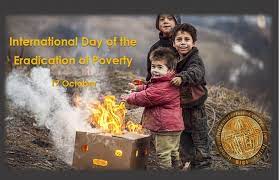Courtesy : Green economy coalition
GREen economy
Humanity faces serious challenges in the coming decades: climate change, biodiversity loss, growing inequality, and more. These systemic global crises cannot be tackled in isolation, because they are all interconnected. But our economic systems are not fit enough to deliver a good balance of environmental and social goals
Economies are, at heart, a collection of rules and norms that reward some behaviours and punish others. In their current form, our economies incentivise overconsumption, degrade communal bonds, and destroy natural wealth. But this is not inevitable or unavoidable; it is simply how our economies have evolved to operate. To solve these problems, a new economic vision is required.
The vision: a fair, green economic future
Our vision of a green economy is one that provides prosperity for all within the ecological limits of the planet. It follows five key principles, each of which draws on important precedents in international policy, and which together can guide economic reform in diverse contexts.

1. The Wellbeing Principle
A green economy enables all people to create and enjoy prosperity.
- The green economy is people-centred. Its purpose is to create genuine, shared prosperity.
- It focuses on growing wealth that will support wellbeing. This wealth is not merely financial, but includes the full range of human, social, physical and natural capitals.
- It prioritizes investment and access to the sustainable natural systems, infrastructure, knowledge and education needed for all people to prosper.
- It offers opportunities for green and decent livelihoods, enterprises and jobs.
- It is built on collective action for public goods, yet is based on individual choices

2. The Justice Principle
The green economy promotes equity within and between generations.
- The green economy is inclusive and non-discriminatory. It shares decision-making, benefits and costs fairly; avoids elite capture; and especially supports women’s empowerment.
- It promotes the equitable distribution of opportunity and outcome, reducing disparities between people, while also giving sufficient space for wildlife and wilderness.
- It takes a long-term perspective on the economy, creating wealth and resilience that serve the interests of future citizens, while also acting urgently to tackle today’s multi-dimensional poverty and injustice.
- It is based on solidarity and social justice, strengthening trust and social ties, and supporting human rights, the rights of workers, indigenous peoples and minorities, and the right to sustainable development.
- It promotes empowerment of MSMEs, social enterprises, and sustainable livelihoods.
- It seeks a fast and fair transition and covers its costs – leaving no-one behind, enabling vulnerable groups to be agents of transition, and innovating in social protection and reskilling.

3. The Planetary Boundaries Principle
The green economy safeguards, restores and invests in nature.
- An inclusive green economy recognizes and nurtures nature’s diverse values – functional values of providing goods and services that underpin the economy, nature’s cultural values that underpin societies, and nature’s ecological values that underpin all of life itself.
- It acknowledges the limited substitutability of natural capital with other capitals, employing the precautionary principle to avoid loss of critical natural capital and breaching ecological limits.
- It invests in protecting, growing and restoring biodiversity, soil, water, air, and natural systems.
- It is innovative in managing natural systems, informed by their properties such as circularity, and aligning with local community livelihoods based on biodiversity and natural systems.

4. The Efficiency and Sufficiency Principle
The green economy is geared to support sustainable consumption and production.
- An inclusive green economy is low-carbon, resource-conserving, diverse and circular. It embraces new models of economic development that address the challenge of creating prosperity within planetary boundaries.
- It recognises there must be a significant global shift to limit consumption of natural resources to physically sustainable levels if we are to remain within planetary boundaries.
- It recognizes a ‘social floor’ of basic goods and services consumption that is essential to meet people’s wellbeing and dignity, as well as unacceptable ‘peaks’ of consumption.
- It aligns prices, subsidies and incentives with true costs to society, through mechanisms where the ‘polluter pays’ and/or where benefits accrue to those who deliver inclusive green outcomes.

5. The Good Governance Principle
The green economy is guided by integrated, accountable and resilient institutions.
- An inclusive green economy is evidence-based – its norms and institutions are interdisciplinary, deploying both sound science and economics along with local knowledge for adaptive strategy.
- It is supported by institutions that are integrated, collaborative and coherent – horizontally across sectors and vertically across governance levels – and with adequate capacity to meet their respective roles in effective, efficient and accountable ways
- It requires public participation, prior informed consent, transparency, social dialogue, democratic accountability, and freedom from vested interests in all institutions – public, private and civil society – so that enlightened leadership is complemented by societal demand.
- It promotes devolved decision-making for local economies and management of natural systems while maintaining strong common, centralized standards, procedures, and compliance systems.
- It builds a financial system with the purpose of delivering wellbeing and sustainability, set up in ways that safely serve the interests of society.
The green economy is a universal and transformative change to the global status quo. It will require a fundamental shift in government priorities. Realising this change is not easy, but it is necessary if we are ever to achieve the Sustainable Development Goals.



